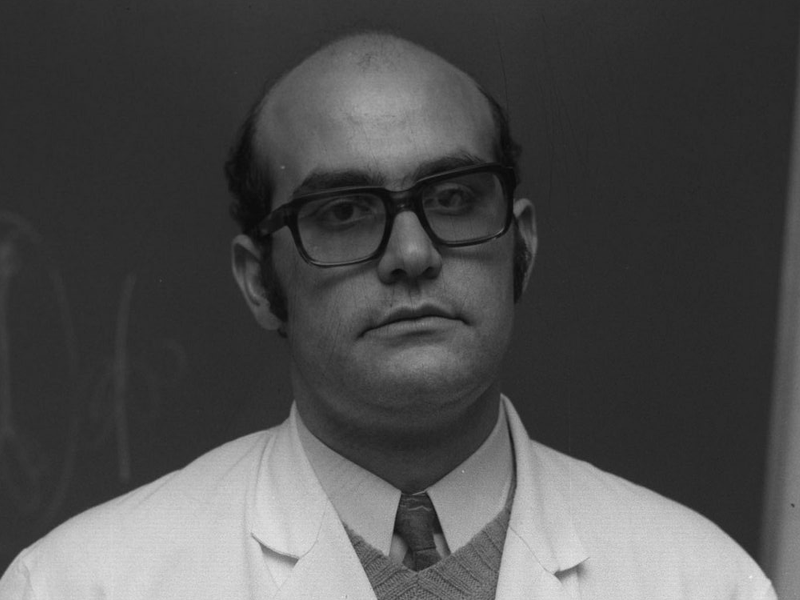A brief look at our history
-
1958
Selective Course
The School was born in October 1958, with a Selective Course that included the disciplines of Mathematics, Physics, Chemistry, Geology and Biology.
The first students of the Selective Course were 64. They shared the premises with Schools of Medicine and Nursing in the first phase of the New School (part of the current Research Building), inaugurated that same year.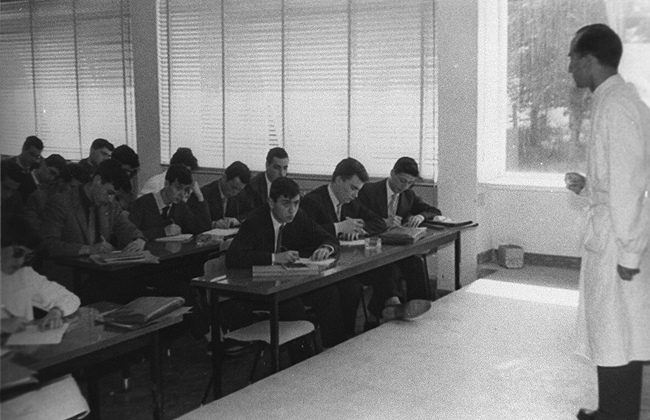
-
1964
First deans
After Álvaro del Amo, who was the first Dean of the School between 1958 and 1964, the following members occupied the position position: Julio Rodríguez, Full Professor of Crystallography and Mineralogy (1964-1969) and José González Ibeas, Full Professor of Industrial Physics (1969-1971).

-
1964
licentiate degree of Biology
Since the University already had several Departments working in different branches of Biology, it was proposed to launch the licentiate degree (only taught in Madrid and Barcelona). The recognition of the programs of study came in 1964.
The 15 students of the first promotion shared classrooms and laboratories with students of Medicine, Nursing and Pharmacy, on the four floors of the "Escuela Nueva" and on the two floors of the adjoining Edificio de Los Castaños.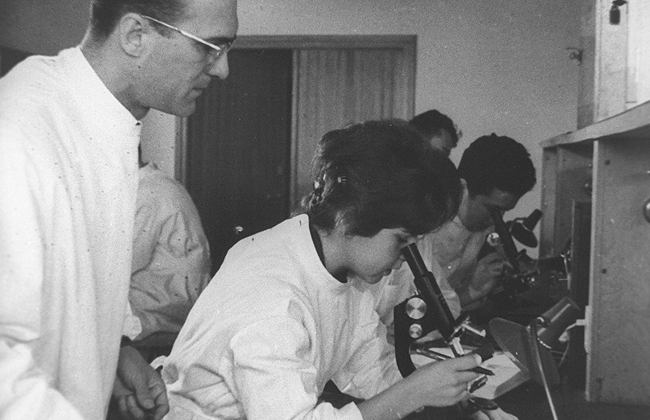
-
1964
Itineraries and departures
From the first course the School created 3 itineraries within the licentiate degree: Fundamental Biology, Animal Biology and Plant Biology, which differed in some subjects of the last two courses.
The last month of the course was dedicated to field trips: excursions to different places to observe the landscape, geography, soils, vegetation and fauna in situ. They also collected material for later study in the laboratories.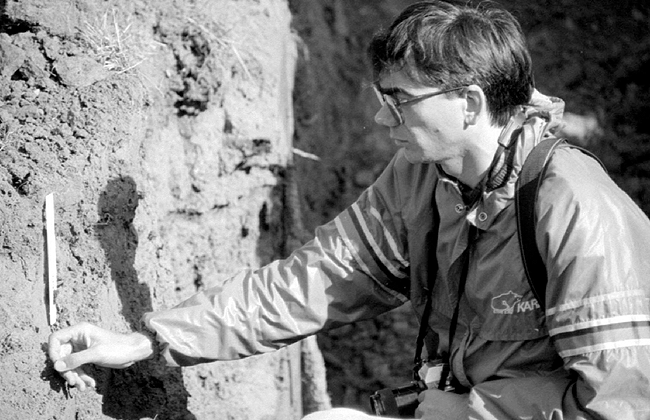
-
1966
Physical Sciences
In 1966, classes in Physical Sciences began. The first graduating class, composed of 9 students, graduated in the 69-70 academic year. In the following years the number of graduates grew issue . So did the number of professors in the Physics section.
Classes were given at the University's headquarters in San Sebastian, then located on Urdaneta Street, and later in Ibaeta. They shared facilities with Tecnun, where they were finally integrated at the end of the 70s.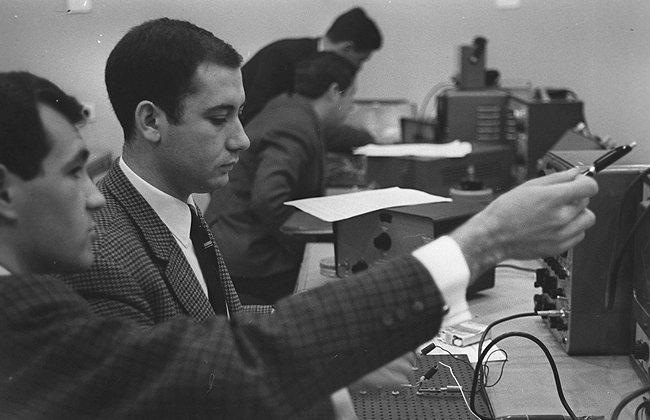
-
1968
First thesis
Rafael Jordana defended in 1968 the first thesis at School (Biology). In Chemistry, Mª Josefina Renedo (1972); in Geology, Ignacio Sánchez-Carpintero (1972); in Physics, Emilio Díaz Calavia (1977); and in Mathematics, Santiago Tejero (1990).

-
1970
Sciences Building
In 1970, the construction of Sciences Building (known as the "Hexagon Building"), designed by Carlos Sobrini, was completed. This expanded the issue of classrooms and laboratories for the use of the four Schools: Science, Medicine, Nursing and Pharmacy.
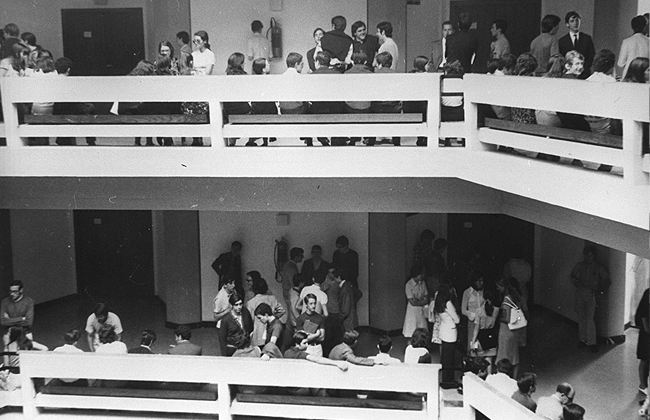
-
1971
New deans
In 1971, Jesús Vázquez, Full Professor of Cytology and Histology, was appointed Dean of the School . He was for ten years, until 1981, when he was replaced by Professor Rafael Jordana, Full Professor of "Animal Physiology" and "Applied Zoology".
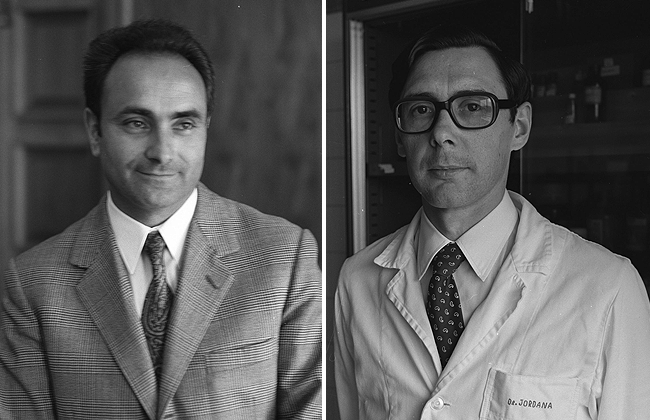
-
1974
Museum of Zoology
In 1974, Professor Rafael Jordana, Associate Dean then of the School, became position of the department of Zoology and put the instructions for the creation of the Museum of Zoology, erected by the President in 1980. He was its director until his retirement in 2011.
In 1990, the Museum incorporated the collections donated to the University by high school Nuestra Señora del Buen committee de Lecároz. Subsequently, together with the Botanical Herbarium and various donations in the Science Museum.
-
1989
New qualifications
In 1989, the School launched two new degrees within the high school University of Applied Sciences: "Chemistry Applied" (replacing Technical Assistants of laboratory, which was directed by Dr. Valdés) and "Dietetics and Human Nutrition".

-
1990
New dean
In 1990 Pilar Sesma was appointed dean of School. She served for 15 years, until 2005. She was the first alumna of the School to occupy the position.
She had obtained the Chair in 1983.
In 2016 she received the Gold Medal of the University.
-
1991
Institute of Physics
During these years, the Physics high school was launched, which housed the Physics and Mathematics department ; and the Ministry approved the programs of study of doctorate in Physics.
Héctor Mancini was one of its promoters and its director from 1996 to 2010.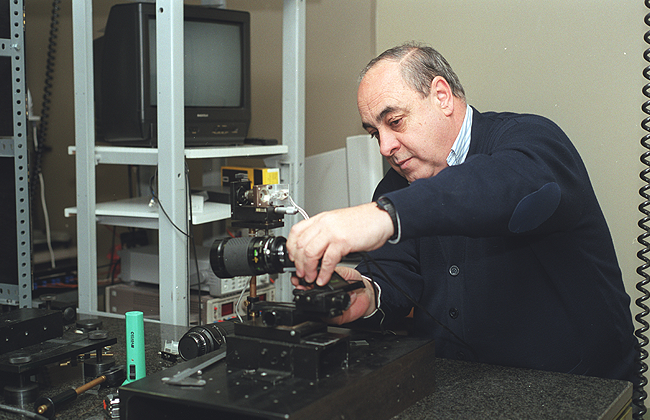
-
1992
high school of Applied Biology
In 1992, the IBA (high school of Applied Biology) was established to cover the industry-oriented research , in which all Departments participated. It was replaced by what is now called Research Management Service.
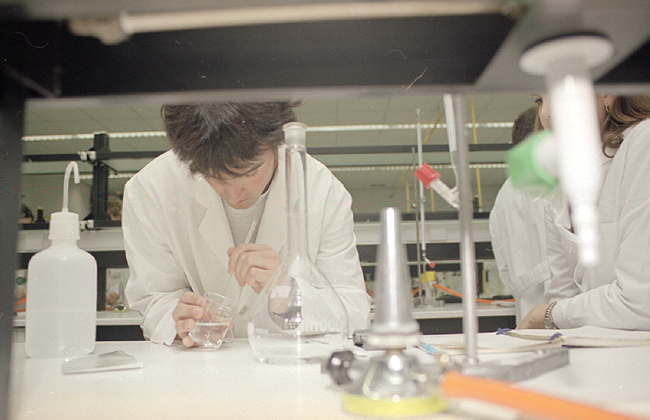
-
1995
Human Nutrition and Dietetics
In 1995, "Human Nutrition and Dietetics" was transformed into licentiate degree. It became official in 1998 (we were the first Spanish university to do so). In the 2005-06 academic year, the degree program was attached to the School of Pharmacy.
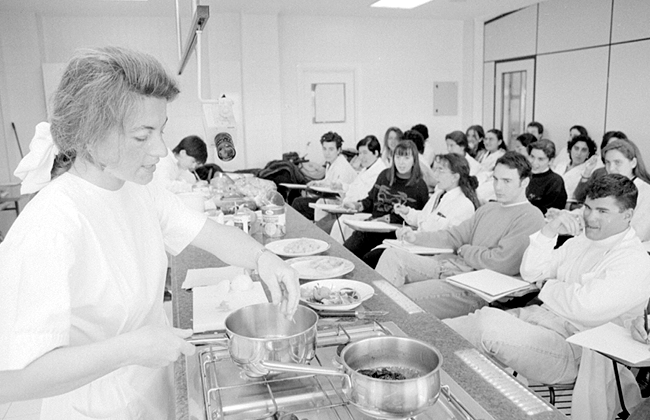
-
1995
Chemistry and Biochemistry
In 1995, the programs of study of Chemistry became licentiate degree . To teach the second cycle of the degree program new laboratories were necessary, which were built in the extension building of the Science Library.
In the same year, the licentiate degree of second cycle of Biochemistry also began.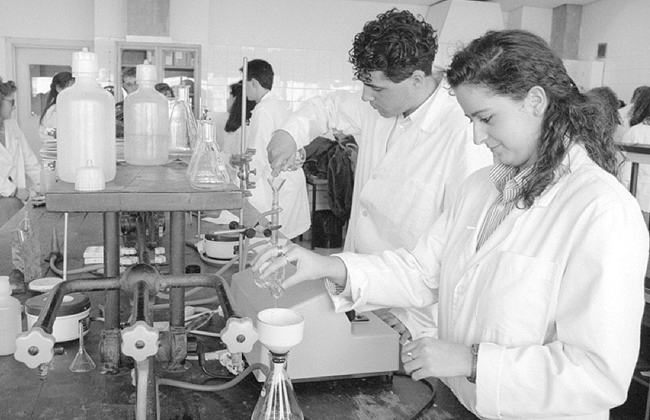
-
1998
Science Museum
In 1998 the Science Museum was inaugurated, which includes several collections of minerals and fossils and the collections of the Botanical Herbarium and the Zoology Museum, which in 1990 had incorporated the collections donated to the University by the high school Nuestra Señora del Buen committee de Lecároz.
Today the Museum is exhibited in showcases distributed throughout the five floors of Hexagon Building, until it has its own headquarters in the new BIOMA Center.
-
2001
Environmental Volunteers
In 2001, the group of Environmental Volunteers was created by the initiative of a group of students from the School of Sciences united by their interest in environmental conservation. At the beginning of the 2009-2010 academic year, the group received a new impetus.
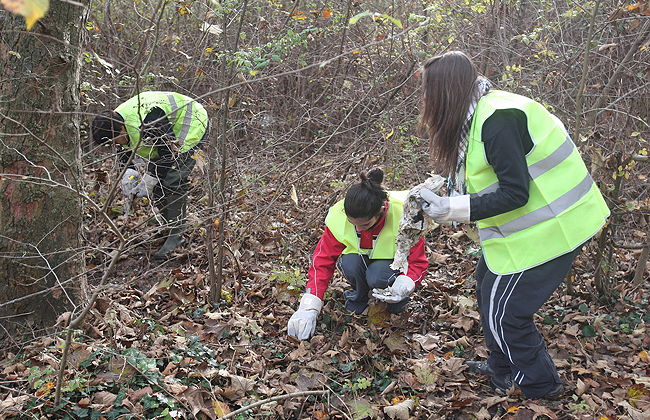
-
2004
CIMA
In 2004, the Cima University of Navarra was inaugurated. The participation and contribution of the School, especially in the areas of Biology and Biochemistry , was decisive. And it continues to be so: a very high percentage of our alumni work in their research.
In addition, many of the Cima researchers teach class at School.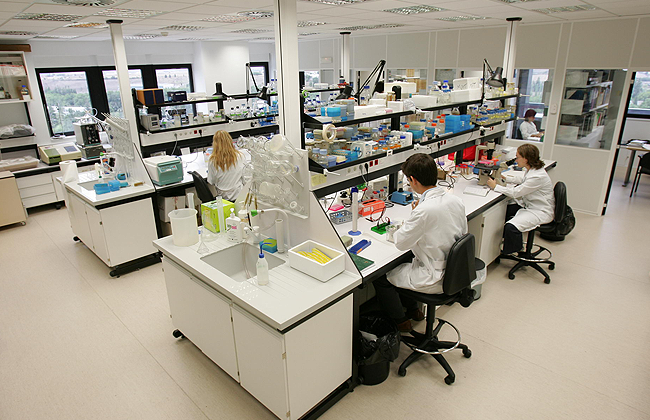
-
2005
New Dean
Ignacio López-Goñi was appointed Dean in 2005. He had studied the licentiate degree in Biology at the School and had obtained the award Extraordinary doctorate in 1989. After several postdoctoral stays in the USA, he had joined the department as a professor at Microbiology and Parasitology in 1992.
In 2009 he obtained the accreditation as Full Professor of Microbiology.
He is currently the director of the Science Museum of the University of Navarra.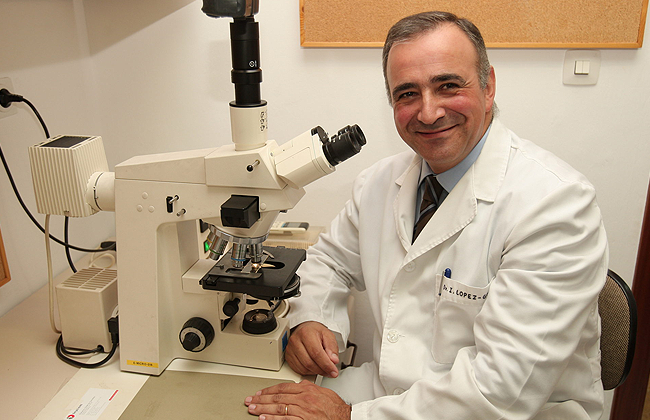
-
2005
laboratory Integrated Environmental Quality
In 2005 was founded the laboratory Integrated Environmental Quality (LICA), formed by professors of the department of Chemistry and Soil Science who develop activities of teaching, research and attendance technique in the environmental field.
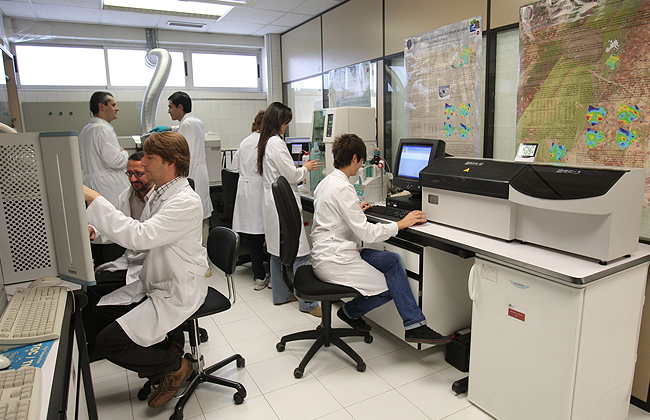
-
2008
Master's Degree in Biomedical Research
In 2008 the School launched the Master's Degree at research Biomedical.

-
2009
New Degrees
In 2009, with the adaptation to the "Bologna plan", the School began to offer the new Degrees in Biology, Biochemistry and Chemistry. The offer professor of Degree of the School was completed in the 2014/15 academic year with the Degree in Environmental Sciences.
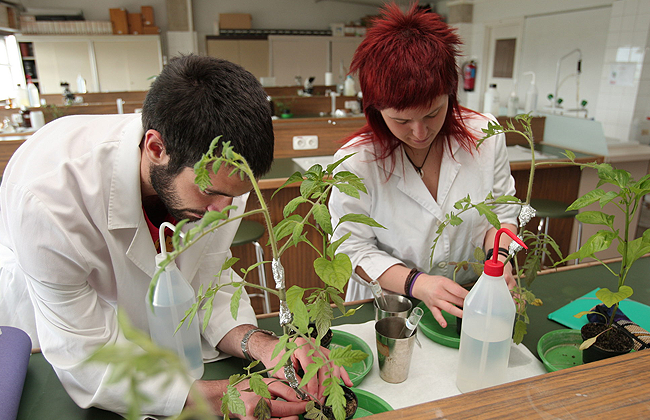
-
2014
New Dean
In 2014 he was appointed Dean Luis Montuenga, Full Professor of Cell Biology at Schools of Science and Medicine, and researcher senior at Cima University of Navarra.

-
2016
Lecture José María Albareda
In 2016, the First José María Albareda Lecture was held, an initiative of the Chair Timac Agro-University of Navarra. The first guest was Avelino Corma, award Príncipe de Asturias de research Científica y Técnica in 2014.
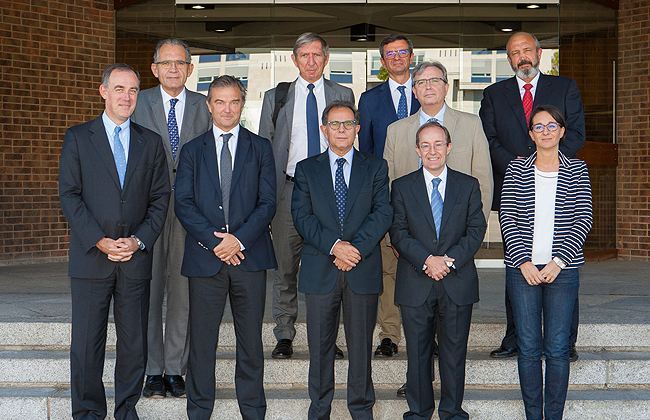
-
2017
Women for Science and Technology
In 2017, School launched the 'Women for Science and Technology' initiative. Formed by female professors, researchers and students, it seeks to support female students who wish to pursue scientific careers, and to make the presence of women in science visible.
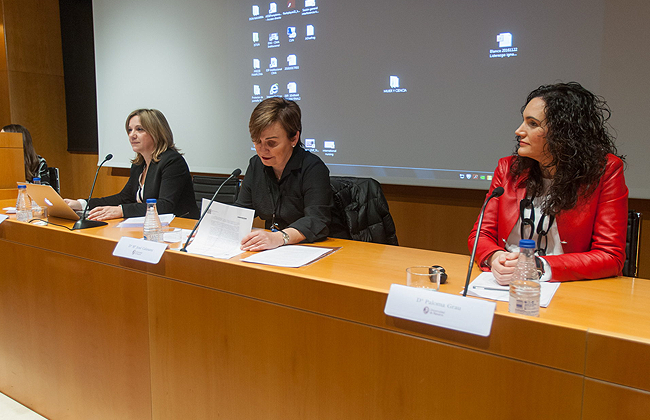
-
2019
Master's Degree in Computational Methods in Science
In 2019, the School began teaching the Master's Degree in Computational Methods in Science.
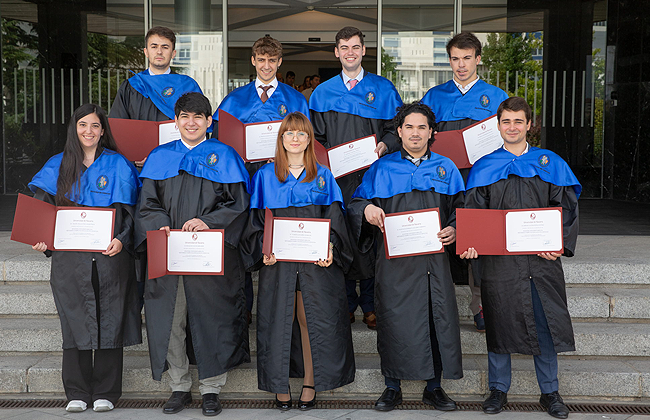
-
2020
Biodiversity and Environment Institute
In January 2020, the Biodiversity and Environment Institute was created by School to address questions core topic on nature and the future of the planet. The center is composed of more than 60 specialists from different areas of research.

-
2022
scientific knowledge dissemination
Since its inception, the School has been committed to the scientific knowledge dissemination as one of its basic pillars. Now, together with the Science Museum, it organizes various activities, especially aimed at school students.
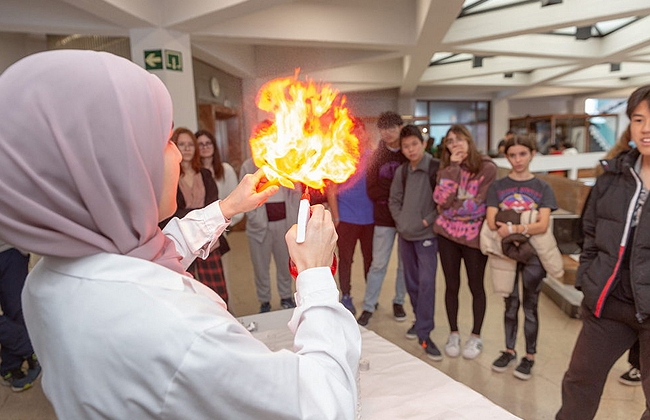
SOME OF THE PIONEERS OF THE SCHOOL
Álvaro del Amo was the first Dean of the School of Sciences. He had joined the then Estudio General de Navarra in 1954 to teach class Biology in Medicine.
Along with him, other professors such as Jaime Iñíguez, Guillermo Alonso del Real, Salvador Valdés, Arturo Gullón, José González Ibeas, Julio Rodríguez Martínez, Francisco Ponz, Rafael Jordana, María Luisa López, José María Muñoz Molina and Jesús Vázquez were part of the beginnings of the School .
In the 1970s, other names joined the pioneers, some of them disciples of those first ones. Ana Barber, Pilar Sesma, Natalia López Moratalla, Luis Herrera or Manuel Sánchez Díaz are some of them.
* Click on the image to learn more about the pioneers of the School
Álvaro del Amo
Álvaro del Amo, graduate and doctor in Natural Sciences, professor of Genetics, was the first Dean of the School of Sciences. He had arrived at the Estudio General de Navarra in 1954, from the University of Coimbra (Portugal), to teach Biology in Medicine.
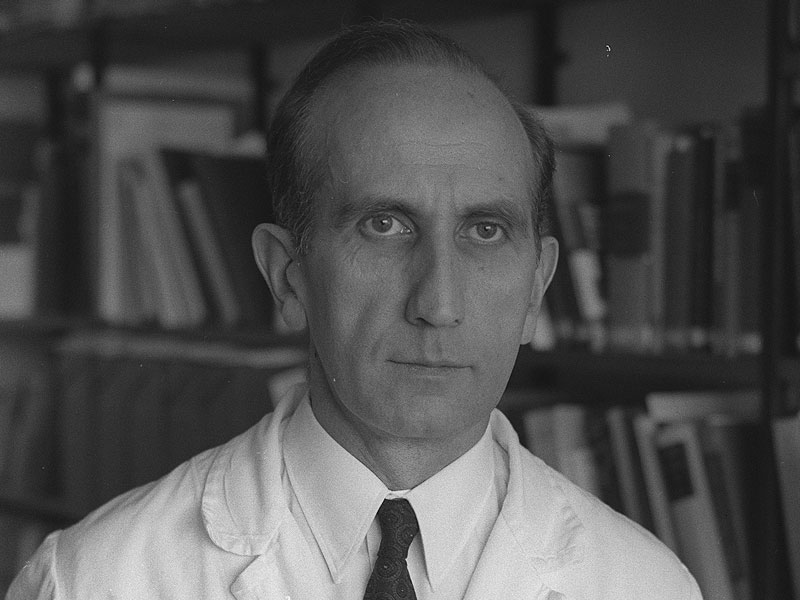
Jaime Íñiguez
Jaime Íñiguez, Full Professor of Soil Science, joined School in 1958. A disciple of José María Albareda, he gave continuity to his teachings and research of soils. He was also director of programs of study of the School.

Guillermo Alonso del Real
Guillermo Alonso del Real, Full Professor of high school, was director of the Unit professor of Zoology in the first promotion of the School.

Salvador Valdes
Salvador Valdés was in charge of teaching of "Physics" at School since 1963. He was director, from 1967 to 1990, of the School of Technical Assistants of laboratory, germ of the later diploma program in Chemistry , then licentiate degree.
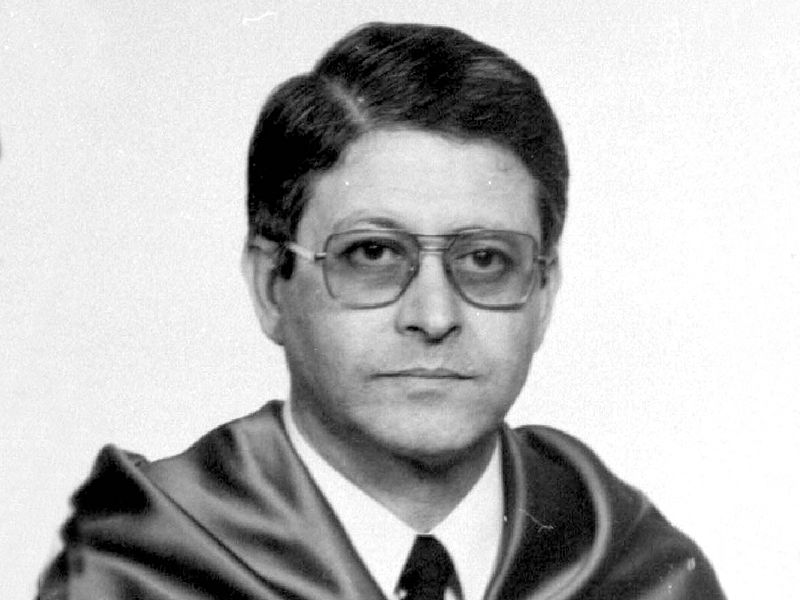
Arturo Gullón Macarrón
Arturo Gullón Macarrón came to Sciences in 1963 to assist Álvaro del Amo. He was a professor of General Biology. For years he was director of programs of study, driving the growth of School.

José González Ibeas
In 1964 José González Ibeas arrived at School of Sciences. He was Dean between 1969 and 1971. Full Professor of Industrial Physics gave shape to the new Physics section of the School, established the necessary body professor and obtained the specific instrumental means.
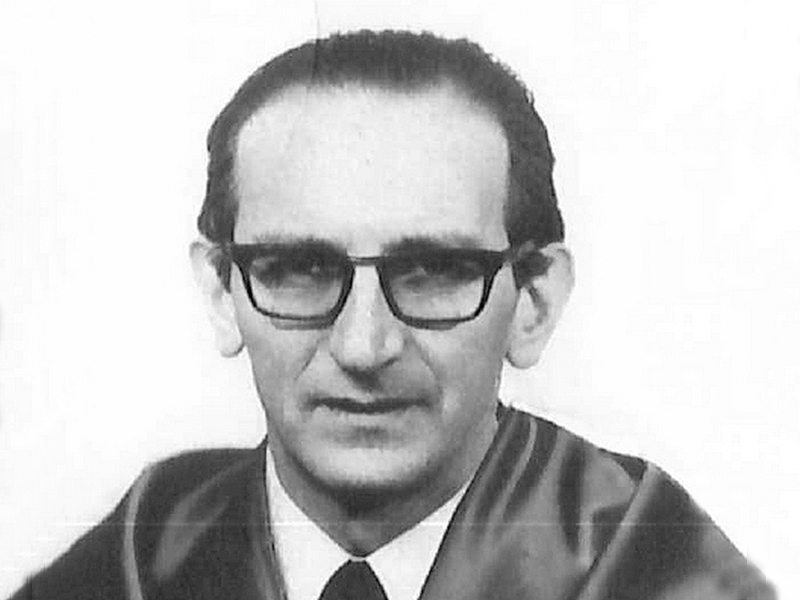
Julio Rodriguez
Julio Rodríguez Martínez, PhD in Science and Pharmacy from the University of Granada in 1953, obtained in 1962 the Chair of Crystallography and Mineralogy at the University of Salamanca.
In 1964 he joined the University, where he was Dean of the School and director of his department of Edaphology until 1969, when he moved to Madrid. There he was President of the Universidad Autónoma de Madrid and promoter of the Museum of Mineralogy, inaugurated in 1971.
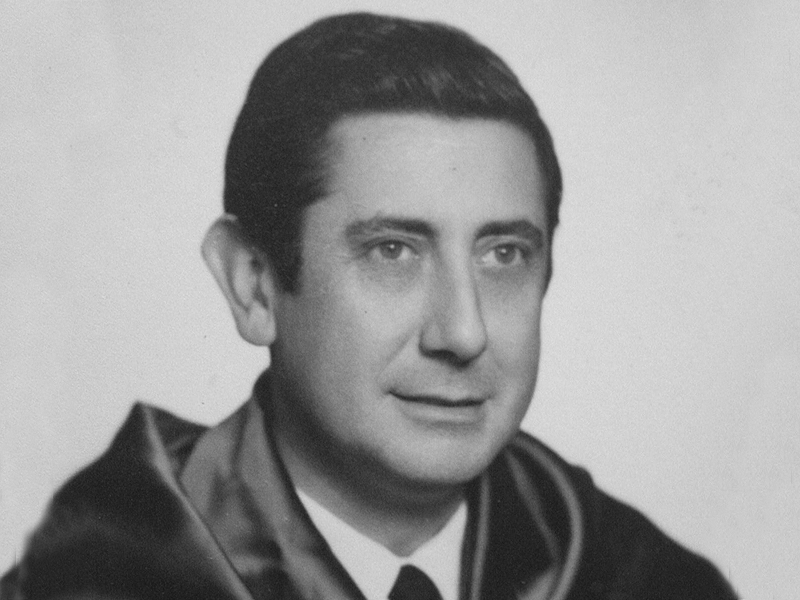
Francisco Ponz
Francisco Ponz came to the University in 1966 as President and professor of "Physiology" at School. After 13 years as President, he continued another 12 years as Vice President of research, until October 1992. He had doctorate at the Complutense University of Madrid in 1942 and in 1944 he had obtained the Chair of Organography and Animal Physiology from the University of Barcelona.
In 1991 he received the Gold Medal of the University.
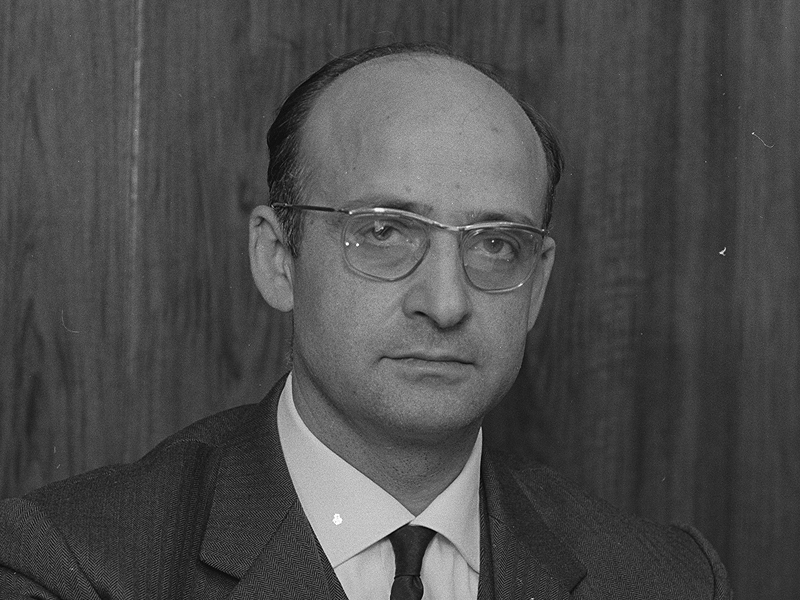
Rafael Jordana
Rafael Jordana graduated in Biological Sciences from the University of Barcelona in 1964. In 1968 he defended his thesis , directed by Francisco Ponz, for which he received the award Extraordinary of doctorate. Already Full Professor he organized and directed the department of Zoology.
He was Dean between 1981 and 1990. During this time, he participated in the creation of the Zoology Museum, the germ of the current Science Museum.
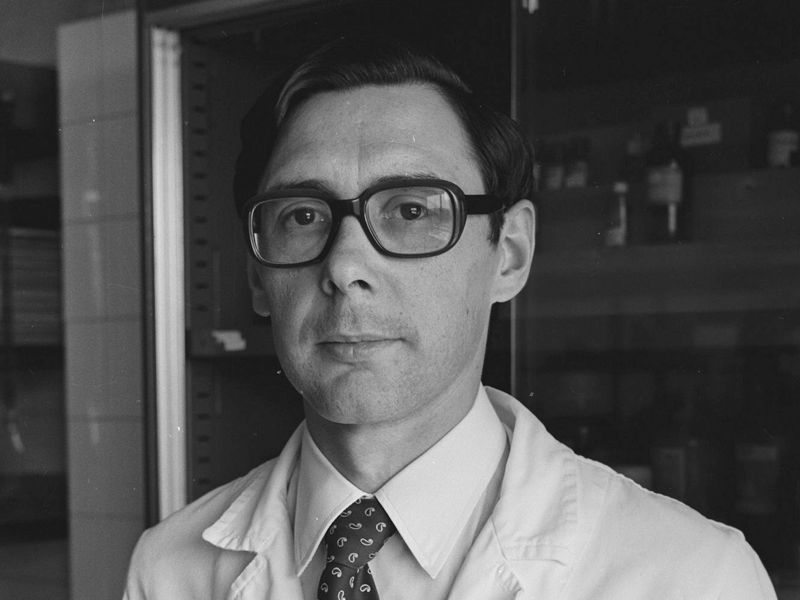
Maria Luisa Lopez
In 1965 María Luisa López joined as a professor of Botany. With a degree in Pharmacy, she began her research on floristic biodiversity of Navarra and her doctoral thesis was the first of the School of Pharmacy.
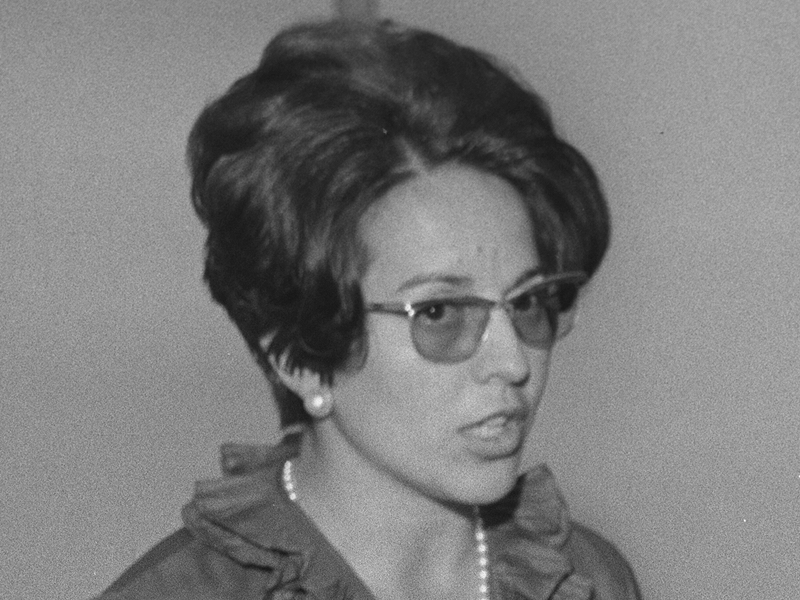
José María Muñoz Molina
José María Muñoz Medina, Full Professor of Botany, was Extraordinary Professor of the School for 10 years. During that time, he organized the laboratory and initiated the Botany Herbarium.
He gave the opening lecture of the 1969/70 course on "History of the development of Botany in Spain".
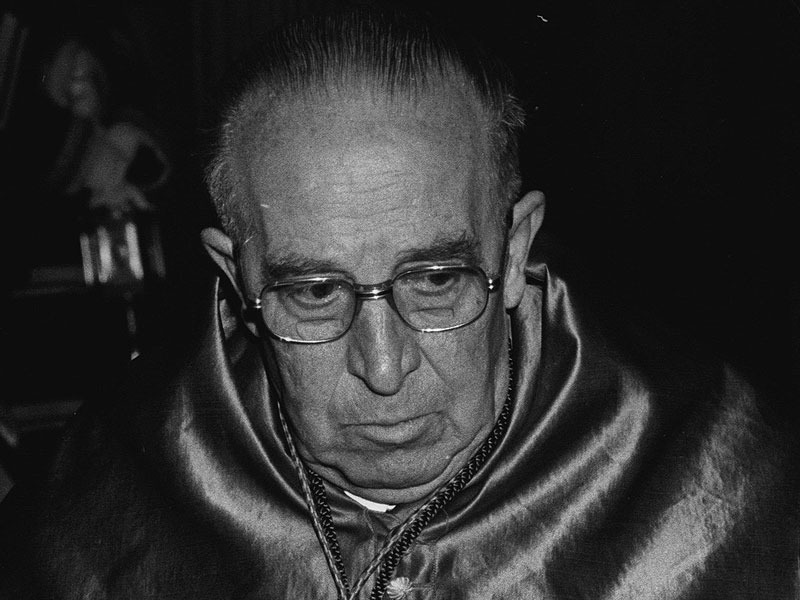
Jesús Vázquez
Jesús Vázquez had joined the department of Histology and Anatomy Pathology of Medicine in 1961. He specialized in the field of electron microscopy. In 1971 he assumed the position of Dean of the School of Sciences. He served for ten years (1971-1981).

Ana Barber
Ana Barber is a graduate of the III Promotion of Biological Sciences (1965-1970). She then joined as a professor teaching assistant at department of Animal Physiology. Four years later, in September 1974, she defended her thesis directed by Rafael Jordana. She was editor of the journal of Physiology and Biochemistry , after Francisco Ponz.
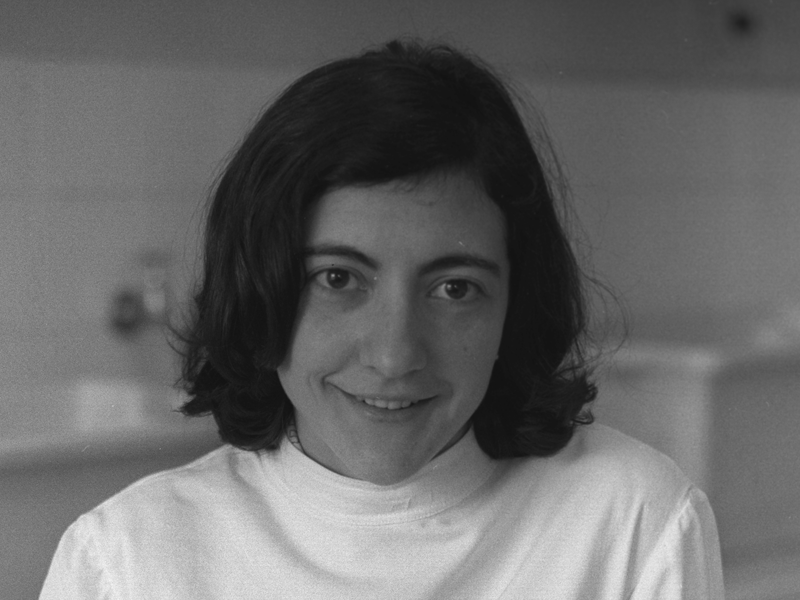
Pilar Sesma
Pilar Sesma, graduate and PhD from the School, is the youngest professor in Spain in her area, Cell Biology, and the first former student from Navarre to obtain a Chair. She was dean from 1990 to 2005.
In 2016 she received the Gold Medal of the University.
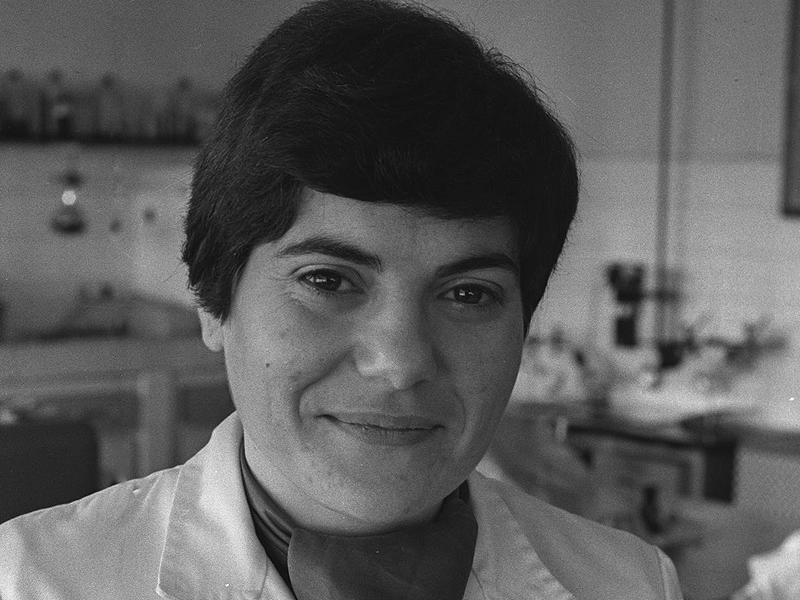
Natalia López Moratalla
Natalia López Moratalla obtained the doctorate in Sciences, Biology section, in 1972. In 1981 she joined School, as professor of Biochemistry and Molecular Biology. She held various positions as director of programs of study, vice-dean, and Vice President.
In 2008 she received the Gold Medal of the University.
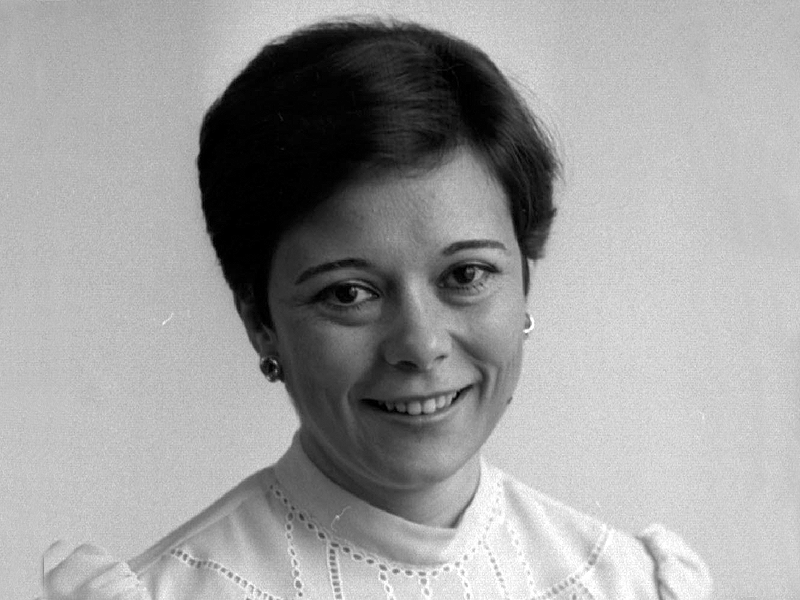
Luis Herrera
Luis Herrera Mesa did the licentiate degree in Biological Sciences (1967-1972) at the University of La Laguna. In 1972 he moved to Pamplona to do the doctorate at the School of Sciences, with Professor Rafael Jordana. She obtained the Chair in Zoology in 2008.
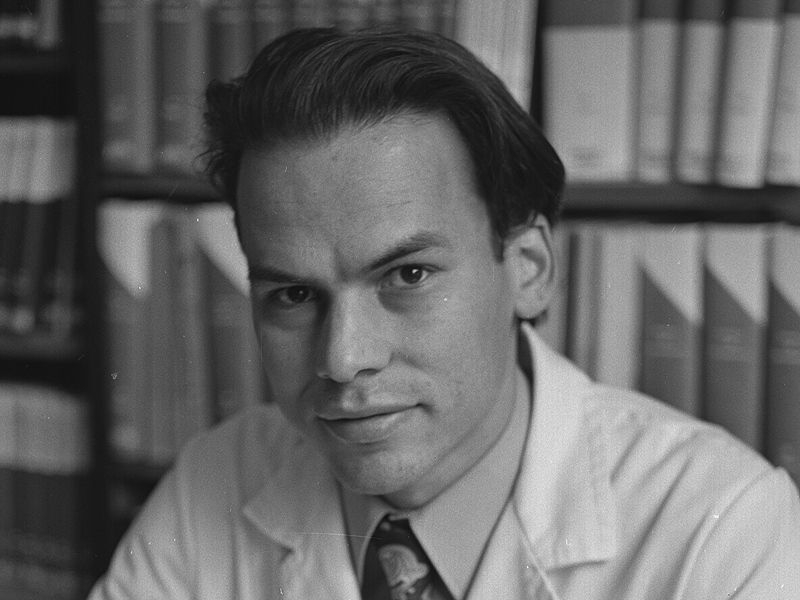
Manuel Sánchez Díaz
Manuel Sánchez Díaz was Professor of Botany during the first years of the School. In 1976 he obtained the Chair of Plant Physiology from the University of Santiago de Compostela. When he rejoined the University in 1978 he started the department of Plant Physiology.
He was Associate Dean of the School.
